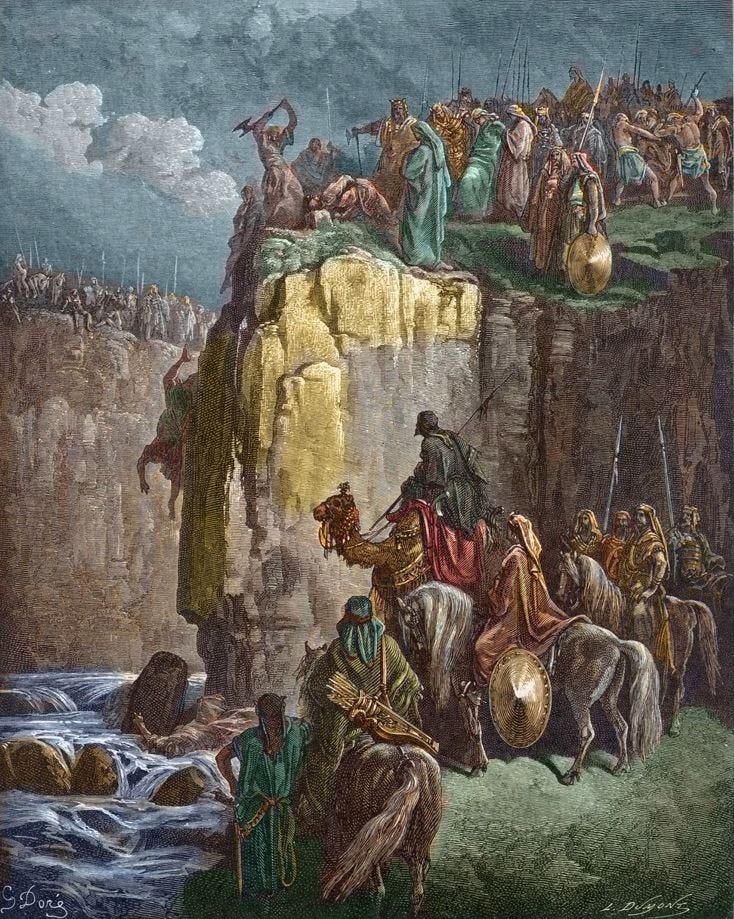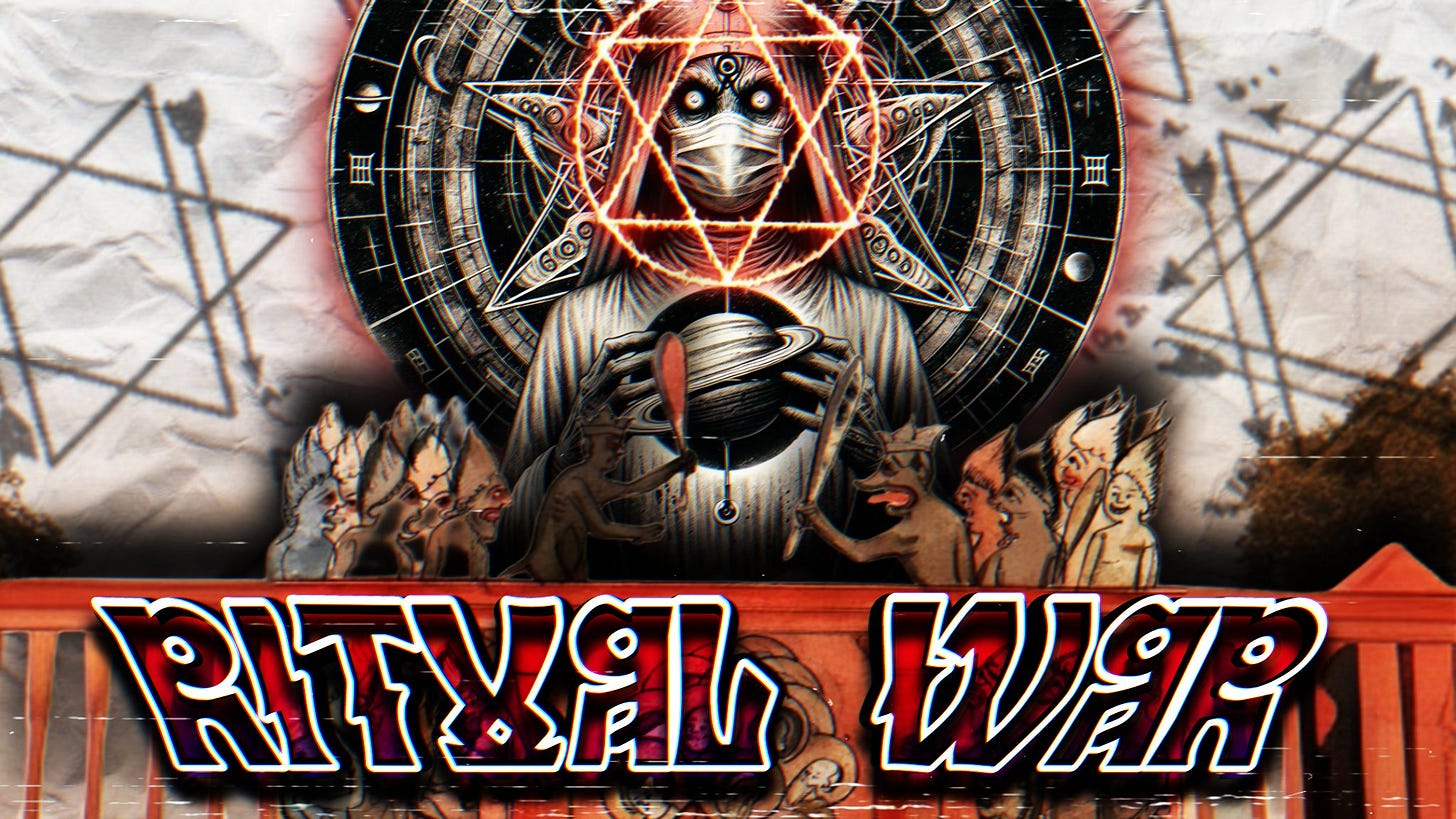Ritual War: Chapters VI & VII, by Nicholas Kozlov
Chapter 6: Gog and Magog, Chapter 7: Hyenas of War
Chapter Six and Seven of ‘Ritual War’ by Nicholas Kozlov explore the esoteric customs of enigmatic tribes in the Northern Caucasus amidst the backdrop of the Russo-Chechen conflicts. Kozlov scrutinizes the unsettling truth of occult medicinal practices amid the ravages of war and terrorism. This text is recommended for mature readers aged 18 and above. To grasp the context of this original translation, it is highly recommended to first read Chapter 1, Chapter 2, Chapters 3, 4, and Chapter 5.
"The bravery of Chechens is evident only when they are in large numbers. When a Chechen shows that he is in charge and behaves cruelly and rudely, it means someone is backing him. And the one who backs him can influence the police, the prosecutor's office, or anyone else to ensure that this bandit is not touched, despite having every reason for arrest and starting a case. That is where all the heroism of the Chechens comes from." (Paul Khlebnikov, Conversation with a Barbarian, 2004, p. 81).
Who is this influential figure standing behind the lawless tribes of the former Khazarian Khaganate? Could he be characterized by a commanding presence, perhaps with a distinctive appearance such as a dark beard, holding a scroll or a book? Or could he be clean-shaven and well-dressed, reminiscent of Talmudic oligarch Boris Berezovsky, one of the orchestrators behind the murder of Orthodox Russo-American journalist Paul Khelbnikov?
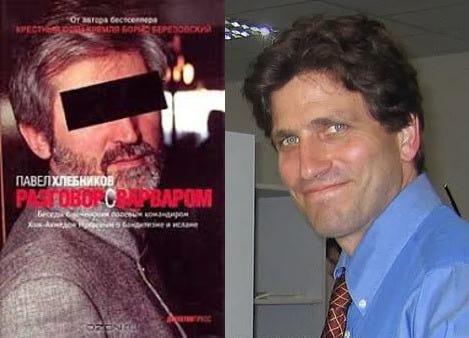
The two most feared words in Russia, ‘Chechen’ and ‘Jew,’ differ only in their psycho-emotional resonance, akin to fear and awe. Just as the Tatars were dreaded before the Battle of Kulikovo, the ‘evil Chechen’ from the Cossack lullaby, who ‘sharpens his dagger,’ was used to scare children about two hundred years ago. Today, uttering the word ‘Jew’ without appropriate reverence can lead to being labeled an anti-Semite. This is despite the fact that the historical ethnogenesis of both Chechens and Jews can be traced back to the same Khazar ancestry.
Chapter VI: Gog and Magog
The Orthodox teaching on divine synergy, the ‘deification of man’ (Theosis), thoroughly developed in patristic asceticism, considers the phenomenon of ‘prelest,’ ‘spiritual delusion,’ ‘possession,’ ‘demonic influence,’ and created synergy as an anthropological antithesis. This concept is mentioned in the epistle of Apostle Paul to the Thessalonians regarding the coming of the Antichrist, a man ‘according to the working of Satan.’

Just as the acquisition of grace and the uncreated energies of the Divinity is central in Orthodox asceticism, so is the created synergy, the mastering or, more precisely, the surrender of oneself to the ‘working’ (energy) of the devil, the main goal of all fanatical occult practices. This includes gnostic martial asceticism, which prescribes various forms of self-torture and ritual mutilation to its adherents, originating from the bloody worship of ancient Semitic-Hamitic deities, and the rituals of Islamic sects, Kabbalistic rites, and, in one form or another, is practiced today by international Freemasonry - the occult component of power and authority structures. The result of these bloody practices, aimed at achieving the created synergy of man and the devil, ritual ‘beastliness,’ should lead to the arrival of the Antichrist in the world, a man ‘according to the working of Satan.’ According to the Holy Fathers, based on the interpretation of the Holy Scriptures, he will be ‘a Jew from the tribe of Dan,’ which in biblical times relocated to the Caucasus and later participated in the Judaization of the Khazar Khaganate.
Arthur Koestler cites the testimony of the medieval Arab historian Ibn Fadlan: ‘Some believe that the Khazars are Gog and Magog’ (Koestler, p. 46).
Gog and Magog are mentioned in the Book of Revelation, in the context of the final decisive battle of the Church of saints with the forces of the Antichrist.
”Now when the thousand years have expired, Satan will be released from his prison and will go out to deceive the nations which are in the four corners of the earth, Gog and Magog, to gather them together to battle, whose number is as the sand of the sea. They went up on the breadth of the earth and surrounded the camp of the saints and the beloved city. And fire came down from God out of heaven and devoured them” (Revelation 20:7-9).
In the book of the prophet Ezekiel, the names Gog and Magog refer to warlike godless nations that will be allowed in the last days to attack the land of Israel and be destroyed there by divine power (Chapters 38 and 39).
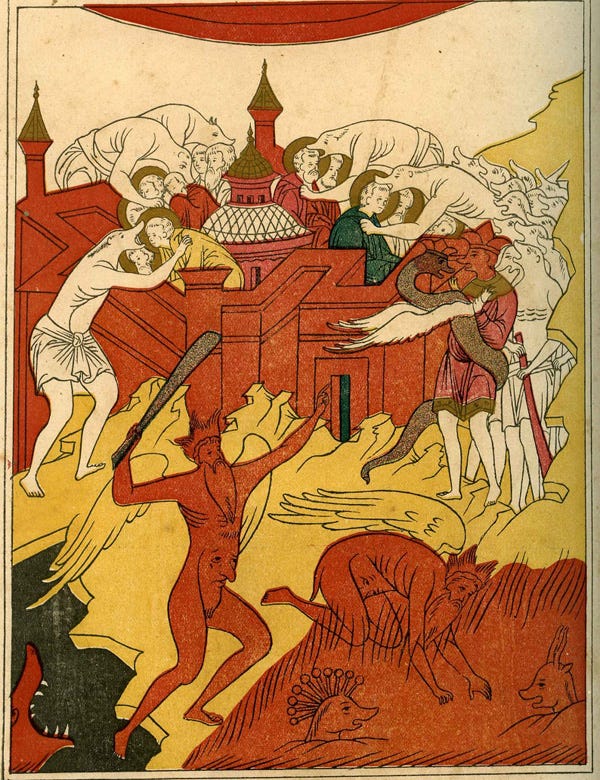
Byzantine prophecies also speak of the appearance of Gog and Magog in the last days. “These are the pagan kings whom King Alexander sealed off from the north. Here are their names: Gog and Magog (...) and all those called cannibals, having the heads of dogs (...). For the people who came from the north will start to eat human flesh and drink blood like water. And they will start to eat all sorts of unclean and vile snakes and scorpions and other reptiles, and all kinds of beasts and carrion. And these people will corrupt the earth and defile it.” (Revelation of Methodius of Patara, Apocrypha of Ancient Rus, Moscow, 1997, p. 24).
"At that time, the Lord God will open the gates that Alexander the Great closed in Indolia, and seventy-two kings will come out with their people, who are called unclean nations, and they will spread across all lands, eating living human flesh and drinking blood, and eating dogs, flies, and frogs, and all the filth of this world, and then there will be woe to the whole world, wherever they go" (Alexander Moldovan, ‘Life of Andrew the Fool-for-Christ in Slavic Literature’, Moscow, 2000, p. 418).
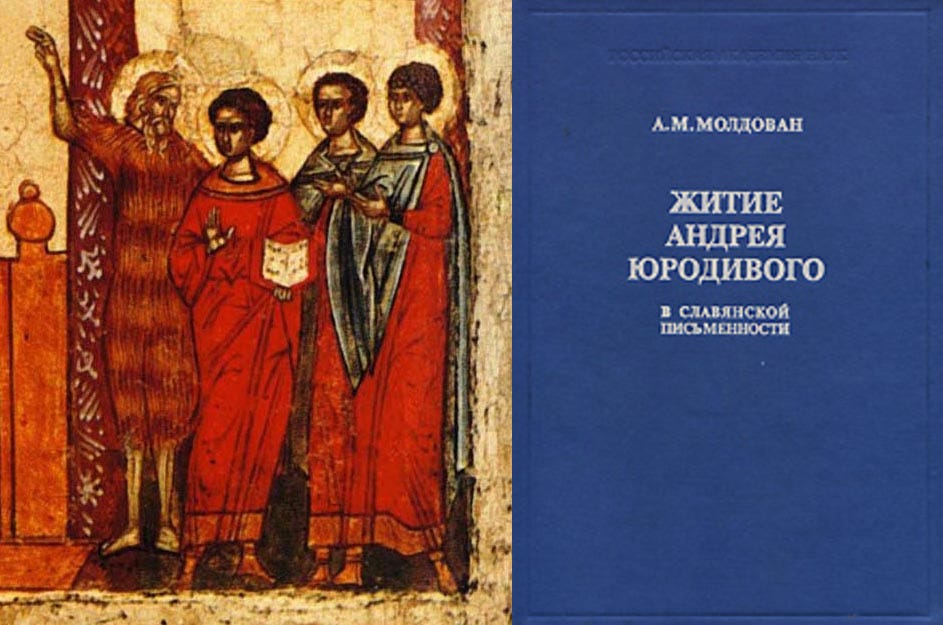
‘Arab writers counted 72 tribes in the mountainous Caucasus, each with their own languages or dialects that were dissimilar to others’ (Artamonov, p. 314), corresponding to the number of unclean (infidel) nations in Revelation. The mountain ranges of the Caucasus were considered to be the very gates behind which these nations were locked by Alexander the Great. According to the interpretations of the Holy Fathers, the Antichrist is a Persian, that is, a Jew from the tribe of Dan, a Persian or Caucasian Jew, from those places where the tribe of Dan relocated. The unclean nation subject to the Antichrist is placed in the eastern and northern borders of Persia, which from a Jerusalem-centric geographic perspective is located to the north. Some claim that according to the prophecy of Ezekiel, Gog (the Antichrist) is the prince of the land of Rosh, Meshech, and Tubal in the land of Magog (Ezekiel 38-39), that is, the supreme ruler of Moscow, the Urals, and Siberia, originating from the land of Magog (the Caucasus or northern Persia). Their reasoning stems from the 10th chapter of Genesis, which reads:
“Now this is the genealogy of the sons of Noah: Shem, Ham, and Japheth. And sons were born to them after the flood. The sons of Japheth were Gomer, Magog, Madai, Javan, Tubal, Meshech, and Tiras. The sons of Gomer were Ashkenaz, Riphath, and Togarmah. The sons of Javan were Elishah, Tarshish, Kittim, and Dodanim. From these the coastland peoples of the Gentiles were separated into their lands, everyone according to his language, according to their families, into their nations.”
Each of Noah's grandsons and great-grandsons became the progenitor of distinct peoples, each named in accordance. The contemporary definition of 'Ashkenazi' denotes a German Jew or a descendant thereof. Simultaneously, it serves as both a toponym and an ethnonym. From the name of their grandfather Japheth, it's evident that the Ashkenazi people are among the Japhetic (non-Semitic) European groups (Indo-Europeans or Aryans). The name 'Gomer' connects us to the 'Gimirrians,' found in cuneiform texts and mentioned in Greek records as the Cimmerians, an ancient people residing north of the Black Sea. Thus, the hypothetical descendants of Meshech, Tubal, and Magog are typically designated by Western biblical scholars as Europeans.
But who exactly are Gog and Magog? Are they a collective name for the enemies of God, a warlike people chosen by God for the instructional punishment of Christians who have become lukewarm, or are they the very embodiment of lawlessness, the sons of perdition who will come to deceive the earth with false miracles and signs? Is their name collective, generic, or proper? Undoubtedly, this will only be known with certainty when the events themselves, foreseen by the Evangelist, come to pass.
The cataclysmic attributes of the biblical unclean nations are vividly depicted through data from a dossier compiled from intelligence reports by the Soviet state security organs on the leader of Chechen bandits in the pre-war period, Hasan Israilov: ‘Arrested, exiled to Siberia. Escaped. During the pursuit, he killed a guard and two dogs, carved out a ‘fillet,’ and fed on it while wandering through the taiga’ (Stepanov, p. 136).
The image of the apocalyptic ‘dog-headed’ figure from Byzantine prophecies strikingly coincides with the predatory face of the mountain wolf, which has become the official emblem of modern Chechnya.
Chapter VII: Hyenas of War
In an occult sense, the Chechen war represents a large-scale experiment in the interests of ‘black’ (experimental) medicine. According to the Holy Scriptures, the meaning and purpose of any war is the satisfaction of the ‘desires of the devil,’ which is ‘murder.’ Sophisticated ritual or sacrificial killing, as a way of serving the devil, was practiced by many ancient peoples, but a special reproach is cast by the Lord Jesus Christ on the lawless Jews who made murder a family profession and elevated it to the level of professional art: ‘You are of your father the devil, and the desires of your father you want to do. He was a murderer from the beginning…’ (John 8:44).
In the cults of Moloch and Baal, adopted by the ancient people of Israel from the Canaanites, the profession of murder or human sacrifice in imitation of divine authority to ‘give life and take it away’ was combined with the art of healing or witchcraft. Baal or Bel was considered in antiquity the patron of medical science. Baliae (‘Балии’), sorcerers or magicians, were the names given to the servants of the Baal cult, priests who performed sophisticated human sacrifices. These priests, by virtue of their profession as experts in human anatomy and the secrets of life and death inaccessible to the uninitiated, were also healers of ailments.
